Did you know that over 60% of preventable health crises result from delayed detection of critical symptoms? With the rise of remote patient monitoring, that alarming statistic is transforming—saving lives and reshaping health care as we know it. In today’s fast-paced world, pinpointing subtle changes in your health can make the difference between immediate treatment and a medical crisis. This comprehensive guide explores how remote patient monitoring delivers timely intervention, bridges gaps in care, and empowers both patients and providers to stay a step ahead of emergencies.
Remote Patient Monitoring: The Startling Reality of Missed Critical Health Signs
- Startling statistic: Over 60% of preventable health crises are linked to delayed detection of symptoms. With remote patient monitoring, that number drops drastically. Discover why health care systems are rapidly transitioning to patient monitoring technologies.
Every year, countless patients suffer life-threatening health events because subtle symptoms go unnoticed. Delayed detection of vital signs and warning indicators is a leading cause of preventable crises in health care. This issue is no longer a footnote—over 60% of avoidable complications, according to industry reports, are a direct result of missed or unmonitored health data. Remote patient monitoring (RPM) addresses this problem head-on, giving care teams continual access to patient data far beyond the walls of hospitals or clinics. By implementing digital monitoring tools, clinicians are alerted the moment anomalies arise, enabling rapid intervention and improved patient outcomes.
For healthcare systems in the United States and worldwide, the shift to RPM marks a new era. The integration of technology into daily care delivery has proven so effective that missed critical health signals have become an outdated risk. Early adopters in patient monitoring have witnessed sharp drops in emergency visits and hospital readmissions, setting a new standard in proactive health management. The move towards remote patient monitoring is not just a trend—it’s a measurable solution to a longstanding health care gap.

How Remote Patient Monitoring Is Transforming Modern Health Care
- Definition of remote patient monitoring (RPM)
- Key components of a remote monitoring system: devices, data transmission, software
- Evolution of patient monitoring in health care over the last decade
Remote patient monitoring is a health care innovation that involves collecting, transmitting, and analyzing patient health data using monitoring devices outside traditional clinical environments. This approach allows care providers to keep tabs on a patient’s condition in real time, whether they are at home, at work, or traveling. The RPM approach is especially crucial for managing chronic conditions, post-hospitalization recovery, and early detection of health deterioration.
A comprehensive remote monitoring system typically includes several integral components: monitoring devices (like blood pressure cuffs and pulse oximeters), secure data transmission channels, and sophisticated software platforms. These elements work together to capture a patient’s vital signs —such as heart rate, blood pressure, and blood glucose—then transmit this vital information directly to clinical teams for instant analysis. The evolution of this technology over the past decade is nothing short of extraordinary; patient monitoring tools have advanced from bulky, clinic-only devices to nimble, wearable, and Bluetooth-enabled gadgets that easily pair with smartphones or tablets.
Over the last ten years, these technological leaps have utterly transformed how health care is delivered. Remote patient monitoring now offers earlier detection of complications, rapid escalation protocols, and seamless integration into monitoring program workflows. Today, continuous monitoring is no longer a privilege—it is becoming the expected standard of care, improving patient longevity and satisfaction throughout the United States .
What You’ll Gain by Embracing Remote Patient Monitoring
- How remote patient monitoring reduces hospital readmissions
- Ways RPM improves patient outcomes and satisfaction
- Why health providers rely on remote patient monitoring for proactive care
The widespread adoption of remote patient monitoring brings measurable benefits to both patients and providers. Hospitals using RPM technology report a significant decline in avoidable readmissions, particularly among patients with chronic diseases or those recovering from surgery. By continuously detecting shifts in vital signs and health status, RPM empowers care teams to intervene early—often before complications escalate into emergencies.
For patients, RPM means peace of mind and greater engagement in managing their own care. They enjoy increased autonomy while knowing that their health data is actively monitored around the clock. Studies show that patient satisfaction soars when individuals feel connected to their care teams and receive prompt responses to concerns. This real-time oversight ensures that even minor deviations, such as small changes in blood pressure or a modest rise in temperature, receive the medical attention they deserve—often via a quick call or targeted medication adjustment.
Healthcare providers now depend on RPM as a cornerstone of proactive, personalized care. These systems drive efficiency at all levels: streamlined communication, prioritized alerts, and data-driven decision-making. As preventive care takes priority in health care delivery, remote patient monitoring stands out as a powerful tool to transform traditional models, reduce healthcare costs, and foster positive patient outcomes for diverse populations.

The Essentials of Remote Patient Monitoring: Key Health Care Devices and Programs
- Introduction to popular monitoring devices: blood pressure cuffs, pulse oximeters, digital scales, glucose meters
- How monitoring device integration supports patient monitoring
- Typical workflow of a monitoring program: enrollment, setup, daily checks
Effective remote patient monitoring is built on the backbone of reliable devices and well-structured programs. Essential tools, such as blood pressure cuffs , pulse oximeters , digital scales, and glucose meters , form the foundation of most RPM solutions. These monitoring devices collect crucial readings—like blood pressure , oxygen saturation, body weight, and blood glucose—transmitting each data point directly to care teams for instant evaluation.
Proper device integration is critical for RPM success. Modern monitoring systems are designed to sync with electronic health records and digital platforms, ensuring seamless data flow for providers and accurate tracking for patients. When all parts are in harmony, both clinicians and patients are armed with up-to-the-minute information, making health management smoother and more precise.
A standard monitoring program typically includes steps such as identifying eligible patients, enrolling and onboarding them, instructing on device usage, and overseeing regular check-ins. Setup is user-friendly: patients are trained to use their rpm devices , perform daily checks, and transmit data either automatically or through guided prompts. This workflow not only encourages patient engagement but also guarantees timely action in case of adverse readings.
| Device | Primary Function | Integration Type |
|---|---|---|
| Blood Pressure Cuff | Monitors blood pressure and heart rate | Bluetooth/Wi-Fi to EHR platform |
| Pulse Oximeter | Tracks oxygen saturation and pulse | Mobile app sync or direct upload |
| Digital Scale | Records body weight and BMI | Cloud-based dashboard linkage |
| Glucose Meter | Measures blood glucose trends | Wireless, often with alert system |
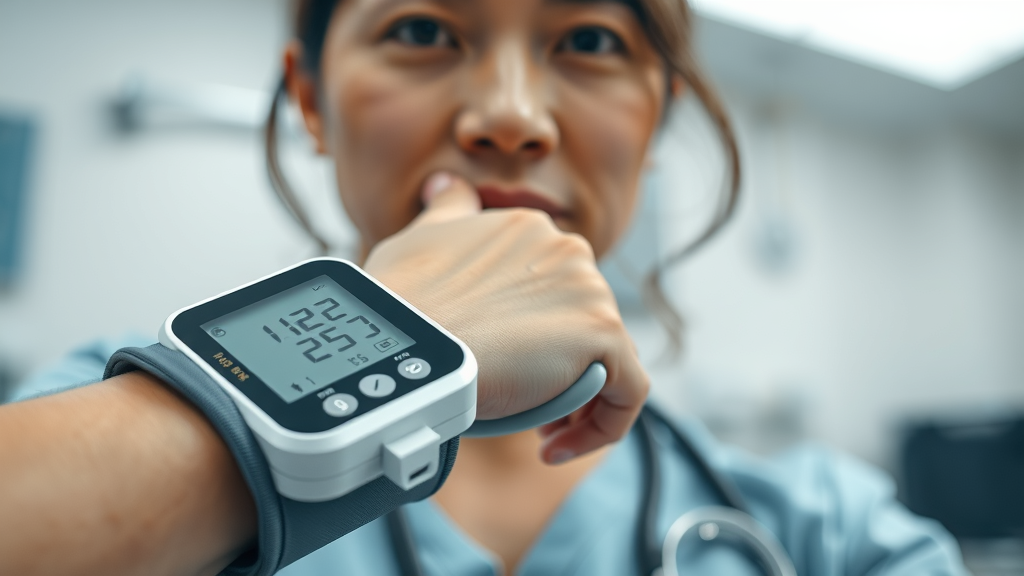
The Core Benefits of Remote Patient Monitoring in Health Care
- Continuous patient monitoring and real-time health data collection
- Detection of early warning signs for chronic diseases
- Greater access to health care for rural and underserved populations
- Facilitation of patient engagement through remote monitor tools
- Reduction in unnecessary hospital visits
The advantages of remote patient monitoring in modern health care are both immediate and far-reaching. At the core is continuous, real-time tracking of patient data —turning periodic checkups into uninterrupted health observation. This 24/7 information stream equips clinicians to detect early warning signs, especially for chronic conditions such as hypertension, diabetes, and heart disease. Intervening at the first sign of trouble helps halt deterioration and avoid costly complications.
RPM is also a game-changer for expanding care access across the United States , particularly in rural or medically underserved areas. Patients who once faced barriers such as travel distance, work conflicts, or mobility challenges now benefit from the convenience and support of at-home health assessment. Remote monitoring doesn’t just empower providers; it brings the full weight of modern medicine to people who need it most, bridging systemic gaps in care delivery .
Another key benefit is patient empowerment. By leveraging remote monitor tools, individuals are more engaged and proactive, learning to spot trends and manage symptoms before they escalate. RPM systems reduce unnecessary emergency room visits and routine check-ins, freeing up resources in busy health systems and improving satisfaction on both sides of the exam table. Remote patient monitoring truly redefines what it means to deliver efficient, responsive, and patient-centered care.
How Remote Monitoring Devices Collect and Transmit Health Data
Modern monitoring devices are engineered to collect and share health information seamlessly. Once a device measures a patient’s vital sign —like heart rate or oxygen saturation—it digitizes that data instantly. The readings are encrypted and securely transmitted through mobile apps, cloud dashboards, or direct integration with electronic health records. Whether it’s a patient at home checking their blood pressure cuff or a digital scale tracking weight daily, this flow ensures no data point is missed.
Data security is paramount in these processes. Sophisticated protocols are used to protect patient data , adhering to stringent standards such as HIPAA. Only authorized healthcare providers have access, and any transfer—whether via Wi-Fi, Bluetooth, or cellular connection—is protected to maintain confidentiality. The power of interoperability ensures that different devices, regardless of manufacturer, can speak the same language and update care teams in real time.
This seamless data flow is what enables early interventions. Instead of waiting for a quarterly office visit to spot an abnormal trend, remote monitors empower care providers to recognize and address dangerous changes the same day they occur. The integration of remote monitoring into the daily rhythm of clinicians and patients alike is elevating chronic disease management to a level that was unthinkable just a decade ago.
The Role of Digital Health and Secure Data Transmission
- Overview of health data security protocols
- How remote monitors send data to care teams
- The importance of interoperability in monitoring devices
A cornerstone of modern digital health , secure data management empowers remote monitors to function safely and effectively. Confidentiality is protected through end-to-end encryption, multi-factor authentication, and regular security audits. These protocols ensure that only verified users—typically the patient, their care provider, and authorized health system personnel—can access sensitive patient data .
Remote monitoring devices transmit health information through secure, HIPAA-compliant channels to dedicated care teams. These teams receive live updates, push notifications, or daily summaries depending on monitoring program design. Regardless of transmission type, interoperability is essential: it allows devices from various brands to integrate with different electronic health platforms, creating a holistic view of each patient’s health that’s always up to date.
As the demand for connected health care grows, interoperability and robust security will define the most effective remote patient monitoring solutions. Futureproof RPM must balance connectivity with privacy—ensuring smooth collaboration among diverse technologies without compromising safety, trust, or regulatory requirements.

Setting Up a Remote Patient Monitoring Program: A Step-by-Step Guide
- Identifying patient eligibility for RPM programs
- Selecting remote monitoring devices
- Patient education and onboarding
- Integrating RPM with electronic health records
- Establishing reference ranges for alerts
Launching a successful remote patient monitoring program requires clear planning and stepwise execution. The first step is to identify eligible participants. Providers usually prioritize patients living with chronic disease , those at risk for sudden deterioration, or people recently discharged from inpatient care. Older adults, individuals in remote areas, or patients with complex needs also stand to benefit considerably.
Once patient eligibility is determined, selecting the right monitoring devices is crucial. Options like rpm devices —blood pressure cuffs, pulse oximeters , and digital scales—are chosen based on each patient's specific needs. Training is equally critical: patients (and often their family members) receive hands-on lessons to become comfortable using each tool and troubleshooting basic issues. Providers leverage video modules, print guides, and one-on-one onboarding sessions to prevent confusion or device misuse.
Next, integration with electronic health records ensures a seamless flow of patient data to the care team. Reference ranges and customizable thresholds are set, so alerts trigger only when necessary. Consistent follow-up and technical support keep patients engaged—ensuring data flows consistently and every warning signal gets rapid attention. From selection to setup, a thoughtful monitoring program paves the way for real-world RPM success.
Understanding Remote Patient Monitoring Devices: From Blood Pressure Cuffs to Pulse Oximeters
- Overview of essential rpm devices and their use cases
- How a blood pressure cuff works in remote monitoring
- Advantages of wearable pulse oximeters in chronic disease detection
Today’s remote patient monitoring landscape features a variety of specialized tools designed to meet different clinical needs. The most common rpm devices include blood pressure cuffs , which play a vital role in tracking both blood pressure and heart rate fluctuations. These devices use sensors to measure systolic and diastolic pressure; the data is then transmitted digitally, often with built-in event alerts for dangerous abnormal readings.
Wearable pulse oximeters have become especially important in the management of chronic conditions , such as COPD and heart failure. These compact gadgets, worn as clips or smart bands, monitor oxygen saturation and pulse regularly, alerting care providers to emerging respiratory risks. They’re indispensable in early detection, as a minor decline in oxygen levels can indicate critical changes that require immediate intervention.
Combined with digital scales for weight management and glucose meters for blood glucose control, RPM devices offer a 360-degree view of patient wellness. When each device feeds data into a centralized monitoring system , clinicians can respond quickly to trends long before minor discomfort turns into an acute crisis. The expansion and improved accuracy of these monitoring devices continue to elevate what is possible in health care monitoring.

Remote Patient Monitoring vs. Telehealth: Key Differences for Modern Health Care
- Definition and scope of telehealth vs. patient monitoring
- How remote monitoring provides real-time data collection
- When to use each modality in a health care setting
The terms “ remote patient monitoring ” and “telehealth” are often used interchangeably, but their meaning and scope aren’t identical in modern health care . Telehealth is a broad umbrella encompassing all virtual health interactions: video chats with a doctor, digital health education, remote prescription refills, and more. In contrast, RPM refers specifically to the collection and analysis of physiological health data (like vital signs ) via connected devices, often for patients with chronic disease .
A defining feature of remote patient monitoring is its ability to offer continuous, real-time health data. By automating data collection, RPM increases the likelihood that subtle shifts—such as a climbing blood pressure or erratic heart rhythm—are flagged and acted upon immediately. Telehealth, while equally valuable for remote consultations and follow-up discussions, typically lacks this granular, minute-by-minute data stream.
Knowing when to deploy each modality is key. Providers turn to telehealth for acute care visits, behavioral health sessions, or education, while RPM is best used for ongoing monitoring of at-risk or chronically ill patients. Together, these models are reshaping the way care is delivered and experienced across the United States .
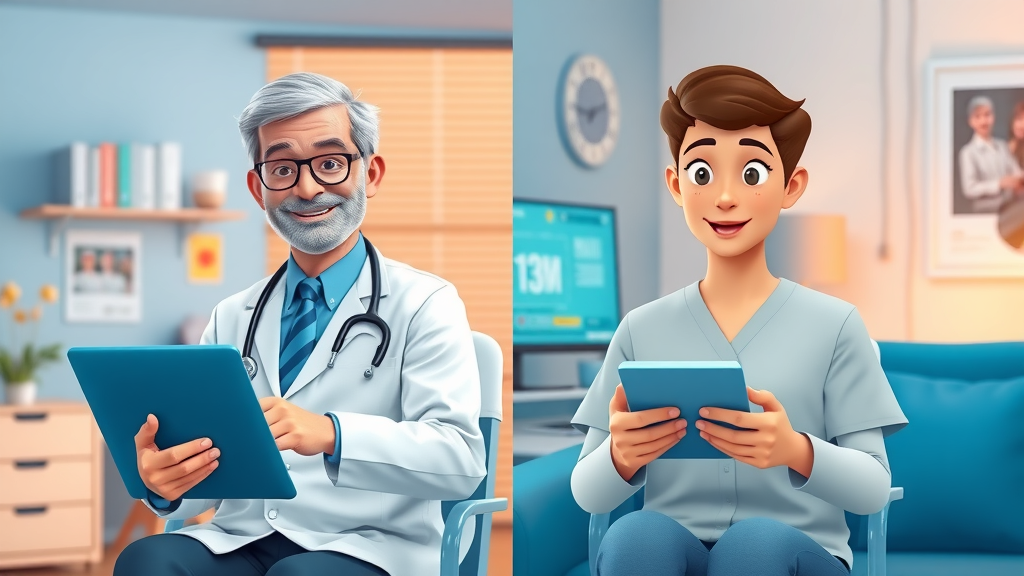
Clinical Impact: How Remote Patient Monitoring Improves Outcomes in Managing Chronic Disease
- Success stories: reducing complications for diabetes and hypertension patients
- Minimizing emergency visits via continuous remote patient monitoring
- Evidence from health care systems in the United States
Clinical evidence consistently shows that remote patient monitoring dramatically improves outcomes for patients struggling with chronic disease , such as diabetes and hypertension. Patients enrolled in RPM programs report fewer complications thanks to rapid response: for example, a sudden jump in blood glucose levels or a spike in blood pressure triggers an immediate call or medication adjustment, halting escalation and preventing hospitalizations.
Continuous RPM reduces the reliance on routine in-office visits and prevents minor issues from snowballing into emergencies. Many U.S. health systems have also published compelling data: patients with heart failure and diabetes have seen up to a 40% reduction in emergency department visits when monitored remotely. This translates into safer health journeys for patients and considerable cost savings for providers.
Success in these cases goes well beyond numbers. Patients feel heard, supported, and safe—knowing their care team is virtually by their side. This peace of mind allows for greater independence and overall better health outcomes , setting a new gold standard for chronic disease management.
| Metric | RPM Approach | Traditional Care |
|---|---|---|
| Hospital Readmissions | 30-40% reduction | No significant change |
| Average Emergency Visits | Significant decrease | Higher rate, especially with chronic conditions |
| Patient Satisfaction | Higher due to proactive care | Lower, often reactive care |
Exploring the Economics: How Much Does RPM Cost and Who Pays?
- Typical costs for remote patient monitoring devices and programs
- Insurance coverage and reimbursement (including Medicare and private payers)
- Cost savings to health care providers and patients
Cost is one of the biggest considerations for both patients and providers exploring remote patient monitoring . The price for rpm devices varies from $50 to $300 per unit, depending on the sophistication of features and sensors. Program fees—including care team oversight and data management—range from $20 to $100 monthly.
The good news is that insurance coverage is expanding rapidly. Medicare and many private payers now reimburse RPM services for eligible patients, especially those with chronic conditions . Some health systems include the price of devices in their care packages, while others bill patients directly if not covered by insurance. The investment in RPM is far outweighed by savings: reduced hospital stays, fewer emergency room visits, and less need for in-person follow-ups drive meaningful savings for the entire care ecosystem.
Health care providers recoup their investment through improved outcomes, better workflow, and greater patient loyalty. As reimbursement models shift to reward preventive care, the business case for remote monitoring has never been stronger.

"Remote patient monitoring has been a revolution in proactive health care, leading to earlier interventions and better outcomes across the board." – Dr. Lisa Monteiro, Health IT Specialist
Overcoming Implementation Barriers in Remote Patient Monitoring
- Addressing patient and provider adoption challenges
- Data privacy and compliance considerations for remote monitoring
- Ensuring accessibility for all patient populations
Widespread adoption of remote patient monitoring is not without its hurdles. Both patients and providers can face initial reluctance due to unfamiliar technology, workflow adjustments, or uncertainty about benefits. Success hinges on robust support, simple device design, and clear communication about the value and safety of RPM.
Data privacy remains a top priority. Providers must rigorously adhere to local and federal regulations (like HIPAA in the United States), ensuring secure transmission, storage, and analysis of health data. Patients must be kept informed of their rights and the measures taken to protect their information, fostering trust throughout the monitoring journey.
Inclusivity is also crucial. RPM programs must offer support for patients with disabilities, limited digital literacy, or inadequate internet access. Solutions include phone-based systems, in-person setup, accessible device design, and strong partnerships with community health workers. The true promise of remote monitoring is only realized when every patient—regardless of background—can join and benefit fully.

Essential Features to Look For in Remote Patient Monitoring Devices
- Accuracy and reliability of monitoring devices
- Ease of use for patients and caregivers
- Integration with remote patient monitoring platforms
- Support for multiple health indicators (e.g., blood pressure, oxygen saturation)
Choosing the right remote patient monitoring devices is vital for operational efficiency and patient safety. Top priorities include device accuracy—ensuring that every reading is precise and consistent—and reliability, so data is never lost or misreported. Devices with intuitive designs and straightforward instructions make onboarding smoother and reduce user error.
Compatibility with established RPM platforms and electronic health record systems is a must-have. Devices should easily link, upload, and display health data for care teams to review, promoting fast response to concerning trends. The best devices track multiple indicators—such as blood pressure , heart rate, oxygen saturation, and blood glucose —creating a fuller health profile for each patient.
Look for strong technical support, robust battery life, clear user feedback, and ongoing software updates. As patient populations become more diverse, device manufacturers are stepping up to offer features like voice instructions, large display screens, and mobile app integration. Investing in well-designed, versatile RPM tools is key for optimizing health outcomes .
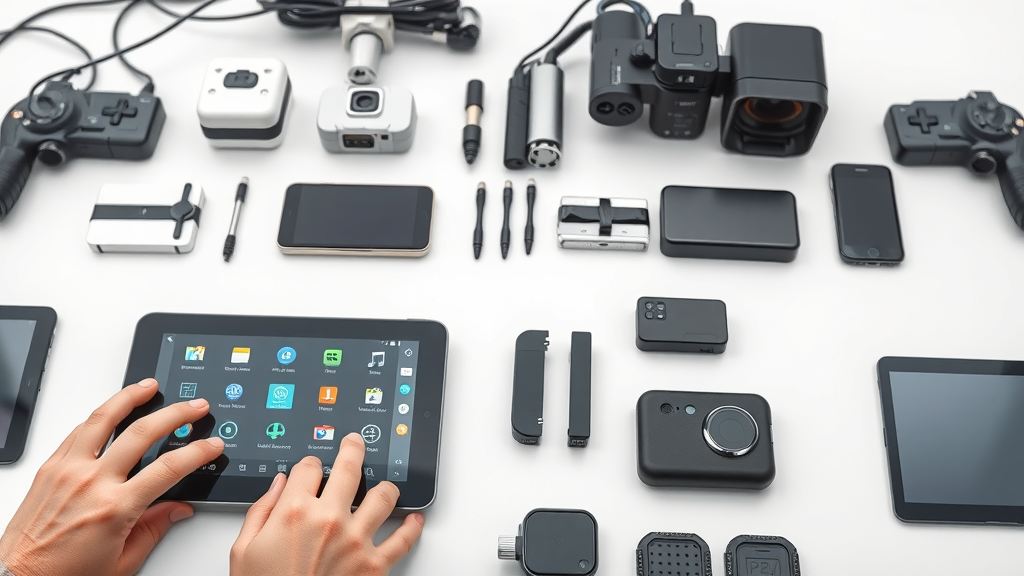
Case Studies: Remote Patient Monitoring Success Across the United States
- Case 1: Remote monitoring reduces hospital readmissions for chronic heart failure
- Case 2: RPM devices lead to early detection of COVID-19 complications
- Case 3: Health care access improved in rural communities
Success stories from around the United States highlight the versatility and power of remote patient monitoring . In one major health system, patients with chronic heart failure saw a 35% reduction in 30-day hospital readmissions after starting RPM. Real-time alerts from their blood pressure cuffs and digital scales enabled clinicians to spot dangerous fluid retention before it became an emergency.
When the COVID-19 pandemic emerged, RPM tools were rapidly deployed to monitor patients isolating at home. Pulse oximeters sent regular updates on oxygen levels, alerting teams to subtle but significant declines. Early interventions prevented escalation in hundreds of cases, freeing up hospital beds and safeguarding patient health from home.
In rural communities, RPM closes the distance between patients and providers. Clinics distribute ready-to-use devices and offer training, then monitor health from afar. These programs deliver expert oversight and faster response—even where physical access is traditionally limited—ushering in more equitable care delivery models for all populations.
Best Practices for Implementing Remote Patient Monitoring in Health Care Settings
- Selecting the right technology partner
- Staff training and patient education
- Continuous monitoring and quality improvement
To ensure RPM success, health systems should carefully select reputable technology partners with proven track records for device security and platform support. A focus on rigorous staff training and patient education cannot be understated; ongoing learning opportunities boost confidence and promote consistent data flow.
Establishing protocols for regular program review leads to continuous improvement. Metrics like alert response time, patient satisfaction scores, and health outcomes should be tracked and correlated with workflow changes. This data-driven approach ensures programs stay responsive, relevant, and effective long-term—benefiting both care teams and patients.
| Step | Best Practice |
|---|---|
| Enrollment | Screen patient eligibility, provide clear expectations, gather consent |
| Device Setup | Offer hands-on training and accessible instructions |
| Data Transmission | Verify secure connections, test alerts prior to launch |
| Monitoring & Alerts | Assign dedicated staff, set smart alert thresholds |
| Quality Review | Analyze outcomes, gather user feedback, update workflow |
"Patients feel safer knowing their care team is just a click away, ready to spot changes before they become emergencies." – Sarah Kim, Registered Nurse
Future Trends: The Next Generation of Remote Patient Monitoring Devices
- AI and machine learning in remote monitoring
- Expansion of remote monitor capabilities (e.g., ECG, fall detection)
- The role of wearable tech in continuous patient monitoring
The future of remote patient monitoring is bright, with innovations pushing the boundaries of what’s possible. Artificial intelligence and machine learning now underpin advanced RPM platforms, actively “learning” each patient’s baseline and flagging even subtle deviations overlooked by standard software.
The array of remote monitor capabilities is rapidly expanding. Devices are increasingly equipped with ECG monitoring, fall detection, and even AI-powered predictive analytics—enabling even earlier interventions for at-risk populations. Wearable tech, including smartwatches and biosensor patches, continues to grow in popularity, offering patients unprecedented freedom and flexibility in managing their own health.
As these trends accelerate, next-gen RPM tools will create a new paradigm in health care : highly personalized, highly proactive, and nearly invisible to the patient. The intersection of digital health, AI, and patient-centered design will drive safer, more responsive, and cost-effective care worldwide.

Key Pitfalls to Avoid When Adopting Remote Patient Monitoring
- Neglecting interoperability between health care systems and devices
- Underestimating the importance of patient engagement
- Not addressing compliance and data privacy laws
Rolling out a remote patient monitoring program presents unique challenges—and common pitfalls to avoid. Overlooking interoperability between platforms and devices can result in fragmented patient data , missed alerts, and unnecessary confusion for all stakeholders. Be diligent in choosing technology partners that prioritize seamless integration.
Another misstep is underestimating patient engagement. Even the most advanced monitoring devices mean little if patients are confused, frustrated, or non-compliant. Invest in user-friendly interfaces, frequent check-ins, and robust instructional materials to foster engagement.
Lastly, failing to address data privacy laws or compliance standards can expose both patients and providers to serious risk. Stay ahead of regulatory changes, embrace best practices for data security, and communicate transparently about how information is handled at every stage.
Checklist: Preparing Your Organization for Remote Patient Monitoring Implementation
- Assess infrastructure readiness
- Select appropriate monitoring systems
- Develop policies for data management
- Engage stakeholders at all levels
A thorough preparation process ensures seamless remote patient monitoring adoption. Start by evaluating your organization’s technological and staffing readiness. Choose rpm devices and platforms that match your patient population’s unique needs. Ensure robust policies are in place for data handling, alert escalation, and ongoing compliance. Finally, gather early input from all stakeholders—patients, clinicians, IT specialists, and administrators—to build consensus and optimize the implementation experience.

People Also Ask
What is remote patient monitoring?
- Remote patient monitoring refers to health care delivery methods where patient health data is collected using digital monitoring devices outside of traditional clinical settings, enabling timely interventions by care teams.
How much does RPM cost?
- RPM costs vary depending on device type, data management, and provider services. On average, device costs can range from $50 to $300 per unit, with monthly program fees between $20-$100. Many insurance plans, including Medicare, cover RPM services.
What is the difference between RPM and telehealth?
- Remote patient monitoring (RPM) focuses on collecting and transmitting real-time health data through devices, often for chronic disease management. Telehealth is a broader term encompassing virtual consultations, education, and other health services delivered remotely.
Who pays for the RPM device?
- RPM device costs are sometimes covered by insurance or Medicare, depending on patient eligibility and provider contracts. Some health care systems absorb the costs or offer devices as part of care programs, while others may bill patients directly.
Common Questions About Remote Patient Monitoring in Health Care
- Is remote patient monitoring secure and confidential? Yes, modern RPM systems use advanced encryption, authentication, and compliance protocols to maintain privacy and integrity of all transmitted patient data.
- Do patients need internet access for RPM? While internet or cellular access enhances real-time data transmission, many RPM devices are designed to store data locally and upload it when a connection is available.
- How quickly do care providers respond to remote monitor alerts? Response time depends on program design, but most RPM systems are monitored in real time. Urgent alerts usually trigger rapid follow-up, often within minutes to a few hours.
Final Thoughts: Embracing Remote Patient Monitoring for Safer Health Outcomes
- Remote patient monitoring is no longer a luxury but a necessity for modern health care. By leveraging the latest monitoring devices and health data systems, patients and providers can stop missing critical health signs and pave the way for proactive, timely interventions across the United States and beyond.
Take Action: Implement Remote Patient Monitoring to Protect Your Patients Today
Remote patient monitoring is the future of health care—don't let your organization or patients fall behind. Act now to modernize care delivery, reduce missed warning signs, and achieve better health outcomes with the power of digital monitoring.
 Add Row
Add Row  Add
Add 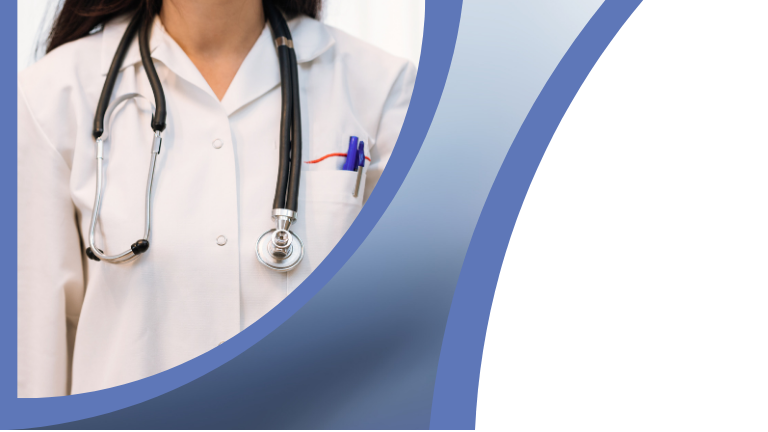

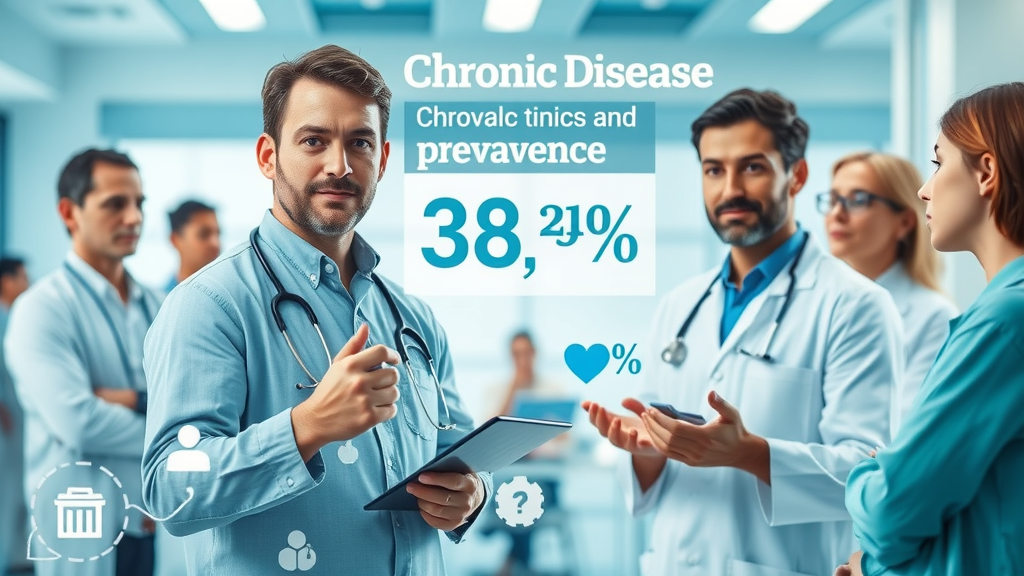

Write A Comment